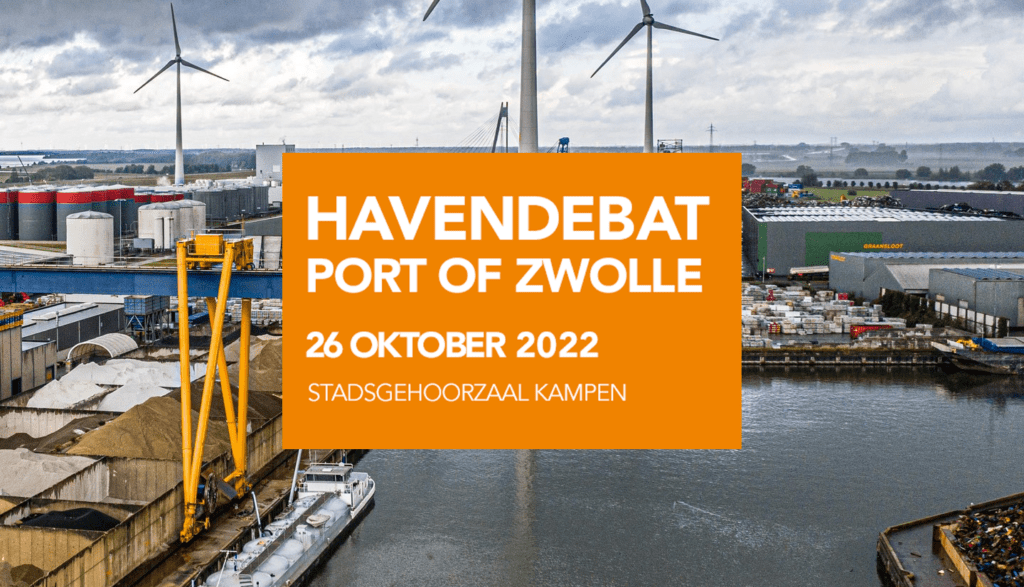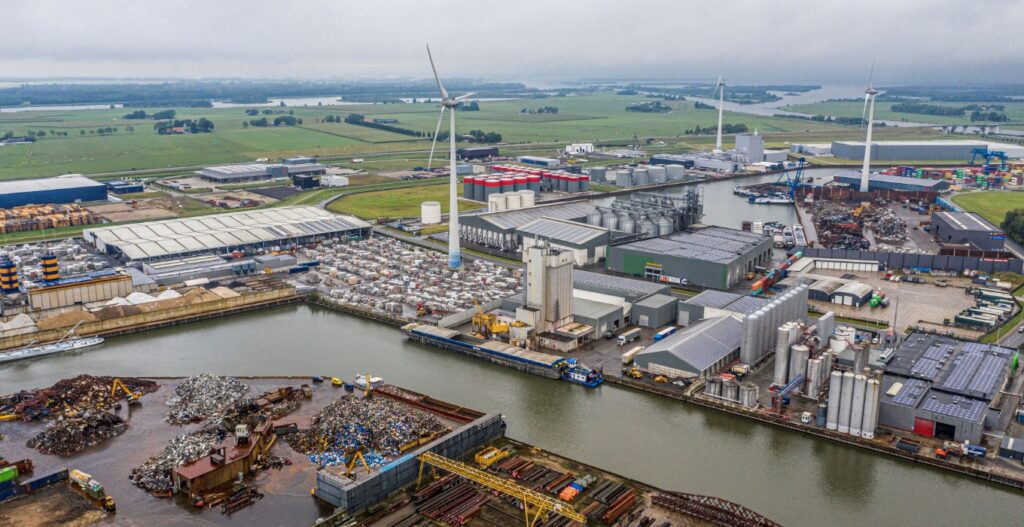The Port of Zwolle as a flywheel for the circular region
With a budget from the Region Deal, the municipality of Zwolle is fully committed to making the ports in the Port of Zwolle more sustainable. In the future, they will play a crucial role in the energy transition and the transition to a circular economy, the region believes. The first step is to free up space. The harbours and industrial areas of the port of Zwolle are already almost full, while the transitions require at least 106 hectares of additional space.
At the end of last year, Paul Guldemond, alderman of Zwolle, sent the ambition document ‘Port of Zwolle – Steering the Future’ to the municipal councils of Meppel, Kampen and Zwolle to further discuss the sustainability of the ports. Now that the councils have been informed, the next phase of the Regio Deal can begin. Part of this is the search for space. This means that we will first focus on optimising and transforming existing sites. Together we will explore the possibilities,” the mayor wrote in the letter.
The ambition document sent by Guldemond is based on the research report Sustainable Port Development Port of Zwolle, which was drawn up by a consortium led by the spatial-economic research agency Stec Groep. Its clients are the municipalities of Zwolle, Kampen and Meppel, the Port of Zwolle and the Noordelijk Innovatielab Circulaire Economie (NICE) foundation. The research report identifies a number of transition opportunities for the Port of Zwolle.
Building on existing DNA
One of the starting points in the report is that the Port of Zwolle needs to build on its own DNA in order to make a successful transition. There are already many agricultural, construction and energy companies in the ports around Zwolle. According to the Stec Group, these companies should be at the heart of the transition. The authors of the report identify three promising transition paths: circular and bio-based construction, green agriculture and renewable energy. Investing in the circular flows of goods should be the flywheel.
In the Port of Meppel, for example, Port of Zwolle wants to fully commit to the reuse of materials such as concrete and rubble from demolished buildings. These materials will arrive in Meppel as ship cargo to be processed into new raw materials to be used in the Zwolle region. Port of Meppel as a raw materials hub is one of four showcase projects in the Port of Zwolle cluster highlighted in the Stec report. The Port of Kampen, which will generate and store renewable energy as a battery for the region, is a second showcase. According to the report, the Port of Kampen should focus on hydrogen and green gas in the coming years. There should also be a circular SME laboratory for circular innovation. The Zwolle business park is seen as a testing ground for climate adaptation.
Innovation counts
The report also highlights innovation as an important prerequisite for a circular Port of Zwolle. It is important to provide space for start-ups to initiate innovation. The influx of new knowledge will prevent a lock-in effect and accelerate the transition of the Port of Zwolle into a port of the future. The idea behind this is also that traditional companies will move closer to the newcomers. We see in other ports that specific space is made available for start-ups. Fenna den Hartog, junior project manager at the NICE Foundation: ‘In addition to technological innovation, we are also thinking about social innovation. We need to look at new ways of working together and ways of getting companies in the chain to talk to each other.
Finding space by optimising and transforming existing sites
Space is one of the bottlenecks in the Port of Zwolle in the coming years. Many ports and industrial business parks are already full or almost full, while an additional 106 to 162 hectares are expected to be needed for, among other things, the expansion of economic activities and new space requirements resulting from the energy transition. Expanding ports and business parks outside the existing city is one solution, but this is not possible everywhere. Therefore, making better use of existing business areas and restructuring and transforming sites are given priority. Building higher is also indirectly mentioned. It helps that in many ports the port authority still owns the land and leases it on a long-term basis, which allows it to influence the development of the sites in the longer term. This also means that companies that do not fit into the circular economy may be kept out in the coming years.
Timetable
In the coming years, the Port of Zwolle will have to prepare for the ‘start of the real circular economy’ in 2030. Only from that year onwards will the demand for space increase as a result of the circular economy. According to the authors, a firm commitment to optimising the current business parks is therefore an absolute must. Entrepreneurs should be involved so that they know what to do in the coming years. Stec Groep writes that regional agreements on business parks should be established. Ports should not start competing with each other. In fact, ports are potentially complementary, so unnecessary competition should be avoided. Between 2030 and 2040, the transformation of the Port of Zwolle will be accelerated. During this period, the necessary space should be available to respond to the expected transition in a timely and successful manner,’ says Stec Groep. After 2040, the Port of Zwolle will be circular. We are aware that this path is fraught with uncertainty,’ concludes Guldemond in his letter. No one has yet walked this path to full sustainability and circularity, and therefore the ambition document is an open invitation to embark on this journey together.
This article by Julian Dubbeld first appeared (in Dutch) on Stadszaken.nl News – February 14, 2023
Image credit: Stadszaken.nl


